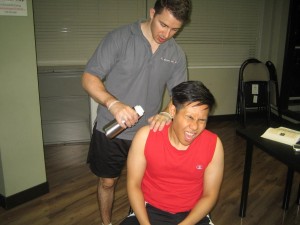Burns are injuries to the skin caused by fire, chemicals, electricity and friction and the injury varies in severity. When distinguishing a trivial burn from a severe burn, you have to conclude the degree of injury to the body tissues. There are three classifications of burn – first-degree, second-degree and third-degree.
[youtube url=”https://www.youtube.com/watch?v=Dsvtzwp4nG8″ width=”220″]First-degree burn
It is the least serious type of burn because only the outer layer of the skin is burned, not all the way through. The appearance of the burned skin is red, sometimes there is swelling of the burned part and also sometimes there is pain in the area.
What causes a first-degree burn and how to prevent it?
First-degree burn or superficial burn can be avoided if you take the right precautions in preventing it. Sunburn develops in the skin by staying out in the sun for too long and not applying the appropriate skin protection on your skin such as sunblock. The intense ultraviolet rays of the sun penetrate the outer layer of the skin causing it to become red while blisters will develop and then eventually peel. Sunburn can be prevented by wearing sunscreen or sunblock with a sun protection factor (SPF) of 30 or higher.
Scalds are common to children those under age 4. Hot liquid from a container on the stove or the steam from hot liquid can also cause burns to the hands, face and body. Scalds can also develop when you bathe in a very hot shower. In order to prevent children from having scalds, keep all cooking pots on the back burners with the handles turned toward the middle. A safe water temperature in taking a shower should be at 120 degrees Fahrenheit or lower. A temperature higher than that can lead to serious skin injuries.
Electrical sockets, electrical cords and appliances can also pose as a danger to a child. For example, when a child inserts a finger or any object into the electrical sockets or bites the electrical cord or plays with an appliance, the child can get burned and electrocuted due to exposure to electricity. One way to prevent such accidents is to cover all exposed electrical wirings, sockets with childproof covers, unplug appliances not in use and place electrical cords in a safe place where children cannot play with it.
Second-degree burn
Second-degree burns involve the top layer of the skin and extend to the dermis which is the deeper layer of the skin. These burns can cause complications especially to children and elderly thus they require medical attention.

A second-degree burn causes the skin to appear red and blisters are likely to form. The skin appears wet due to the lost fluid when the deeper layers of skin are burned. The heartbeat of the victim will increase due to the pain triggered by the burn. There are also white skin patches with irregular discoloured patterns which is another indication of a second degree burn. The victim who is suffering from a second degree burn feels weak, can likely faint and experience rapid breathing. In such cases, you need to seek help from a medical professional.
How to treat first and second- degree burns
Burns are treated based on the severity of the affected area. For first and second-degree burns that is larger than three inches of skin, the basic first aid involves pouring cool water over the affected area for 10 to 15 minutes. You can also apply a cool compress on the burn. You have to dry the burned area and apply a burn ointment to facilitate the healing process and prevent scarring. Cover the affected site using a gauze pad and secure with a bandage.
Third-degree burns
A third-degree burn involves the destruction of the epidermis, dermis and even the deeper layers. Third-degree burns can even go beyond the three skin layers and involve the tissues and bone. It can also be caused by accidentally spilling a scalding liquid over a body part, contact with a hot object for a long period of time, flames from a fire, electrocuted from an open electrical wiring and also from chemicals that can damage your skin.
How to treat a third-degree burn
If an individual sustained a third-degree burn, it would require immediate emergency care. Do not remove the clothing but make sure that the clothes are not in contact with the source of burn. Cover the burned area with a cool, moist cloth and elevate the area above the level of the heart.
